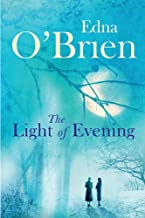Ann Enright’s The Green Road, eventually, is a family saga, but its characters cover a large part of the globe before joining forces in the grist of events back home. But this microcosm that is the Madigan birthright becomes by association something much broader, not only a mirror of contemporary Irish society, but also linked to some of the grander issues that characterize our time.
The poem, “This be the verse” by Philip Larkin, comes to mind, not only because of its portrayal of the role the mums and dads play in family life, but also for two other reasons. First, its title alludes to readings in church, to verses that are perhaps Biblical as well as secular. In contemporary Ireland, the role of the Roman Catholic Church, once unquestioned and unquestionably served, once paramount, has diminished. It may not have diminished as a source of guilt and underlying neurosis as much as the general society will admit. But things have certainly changed. Secondly, Larkin‘s poem bids farewell with the instruction, “And don’t have any kids yourself”. Fortunately for the plot of The Green Road, Ann Enright has her matriarch, Rosaleen Madigan, turn a deaf ear to such advice, or perhaps she simply never heard this command. She had four and they shared the family life that was created for them, went their own separate and individual ways, and then returned, long after their father died to share a Christmas together.
We first meet Rosaleen undergoing a hospital procedure, a biopsy on something that has appeared. Her years are advancing, and she feels the need for change. Perhaps she should sell the house… She muses on the past, present and future and hopes to see her children, now dispersed a class across the globe. At one stage, Dan was destined for the priesthood, a life in the missions, ministering human kindness to those in need. He did finish with his girlfriend, but never took the route that would have led to Holy Orders, thus unwittingly leaving the global charitable acts to a sibling, who acted in an official capacity.
What happens to these children is crucial from the for the book’s plot. From their diverse lives and distant places they return to the family home for a Christmas get together. There are now children, Rosaleen’s grandchildren, children of her own children, doubly corrupted, perhaps, in Larkin’s terms. There are partners as well. There is alcohol. There are stalled careers. There are the hopes and aspirations of modern people involved in a modern world which seems to have left Rosaleen behind, now alone in her County Clare house that is filled with memories. Amongst her children, there are drinking problems, failed relationships, and quite a lot of sex. They are a pretty normal lot, if normality applies to anyone in particular.
“And half at one another’s throats” is a final line in one in the particular stanza of Philip Larkin’s “this be the verse”. But when the Madigans meet for their communal festive celebration, it is the other half that shines through, the half that Larkin did not describe. At least on the surface…
Notwithstanding the tension caused by differing economic status, the need to advertise public happiness via possessions, decayed Catholicism and known but not advertised sexual preferences that a generation before would have produced public damnation, the siblings cooperate via festivities and compete via interests as Rosaleen, their enduring mother, pursues the sale of the family house. It is worth quite a bit, especially in the Ireland of today where people might carry around four hundred euros in their wallet as small change. And so, the siblings compete, differ, recognize the paramountcy of their mother’s needs, but cannot escape the pressures of their own lives or the need to find solutions to problems they have dreamt up. And so together, they prepare their Christmas dinner, with most of the work falling on the sibling that always takes the load.
The
Green Road of the title refers to a journey that Rosaleen undertakes
unannounced, thereby causing panic amongst those left behind. She does not go
far, but rediscovers an unmade track with old houses, yes, in ruins, nearby.
All this, this mess of family life, must have happened before, to other
families in the past, and will be repeated in the future with different actors,
in different places, with different scripts. It is
what we are and, despite what Philip Larkin might opine, we are all part of the
process, for if we weren’t, there would be no one to write
the verse. And we must all be thankful that Anne Enright has the vision and
skill to create this moving and surprising tale.














